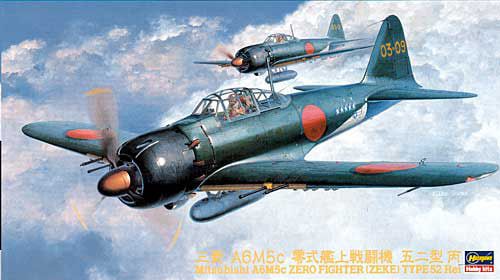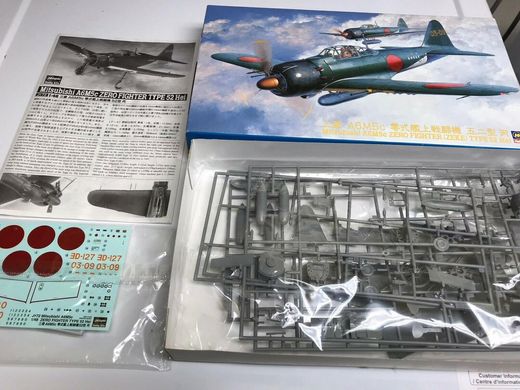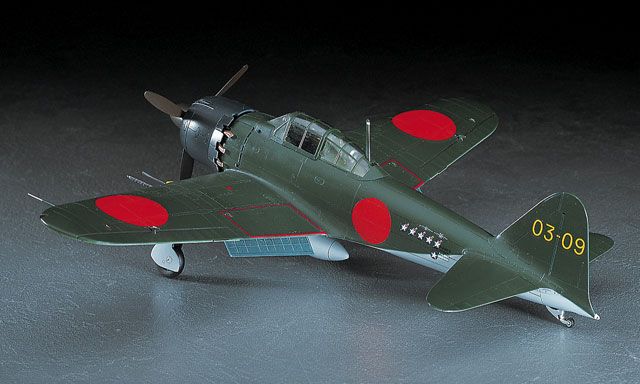The Mitsubishi A6M Reisen (also known as the Zero or Zeke) was a Japanese single-engine all-metal low-flying fighter aircraft of World War II. The flight of the prototype took place on April 1, 1939, and it was accepted into service in the summer of 1940. Early prototypes were powered by the Mitsubishi Zuisei 13 engine, but from the A6M2 Model 11 onwards, the Nakajima NK1B Sakae 12 used the 950 hp engine, making the aircraft one of the best early war fighters. New versions were created just before and during the war. One of the most famous was the A6M2 Model 21, a special version with folding wings designed for aircraft carriers, prepared at the beginning of the Pacific War, which became the basic Japanese carrier-based fighter. The next versions were the A6M3 and A6M5, each of which had several versions. The first used a supercharged 1,130 horsepower Nakajima Sakae 21 engine, which, however, meant more weight and less range and maneuverability. In the A6M5 version, this problem was tried to be solved by changing the exhaust system, changing the shape of the wings and refusing to fold them, which increased the maximum speed. The flight of this version took place in 1943 and was in production until the end of the war. It is worth noting that one of the most mass-produced versions of the A6M5 was the A6M5C Model 52C "Hei" aircraft, of which about 5 thousand were produced. The "Zero" aircraft participated throughout the war in the Pacific, serving mainly as carrier-based fighters, but also largely army fighters. The "father" of this famous aircraft was the engineer Jiro Horikoshi, who relied on his experience working on the M5A aircraft. He managed to develop a very maneuverable aircraft with excellent aerodynamic properties, ideal for combat and with a long flight range. However, this was achieved due to armor and the absence of self-sealing fuel tanks. Moreover, due to the lack of aircraft engines with power comparable to American machines, with each year of the war, the "Zero" from the "supercar" since 1943 evolved towards the weaker competitor P-51, P-47 or F. -4 or F- 6. It also turned out that this machine is vulnerable to damage and very vulnerable to fire. However, this does not change the fact that the Allies did not have an aircraft capable of competing with the A6M Zero until 1943. Technical data (version A6M2 model 21): length: 9.06 m, wingspan: 12 m, height: 3.05 m,


















